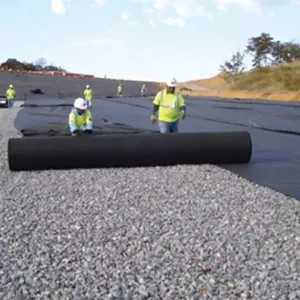
Eco-Friendly Lining Pet Spunbond Nonwoven Fabric Rolls Wholesale Home Textile High Temperature Resistance Non Woven Fabric


Non-woven Geotextile Fabric 100% Pp Polypropylene Non Woven Fabric Geotextiles


















Agriculture nonwoven fabric is a pivotal material in the agricultural sector, known for its versatility and adaptability to various applications. This fabric is engineered through a process that bonds fibers together, creating a structured yet flexible textile. Its unique properties make it suitable for a myriad of uses, from weed control to soil stabilization.
The range of nonwoven fabrics for agricultural use is diverse, each serving specific functions. For instance, spunbond nonwoven fabric is prevalent in packaging, offering protection and cushioning for goods. In contrast, nonwoven geotextile fabric is essential for soil stability and water filtration in agricultural settings. These materials are not only used for practical purposes but also contribute to sustainable farming practices.
The construction of agriculture nonwoven fabric imparts several beneficial features. Its breathability allows air and moisture to circulate, promoting healthier plant and soil conditions. The fabric's durability ensures it can withstand various environmental stresses, while its non-biodegradable nature makes it a long-lasting solution in agricultural applications. Moreover, the nonwoven fabric's ability to act as a barrier against pests and weeds enhances crop protection without the need for chemical interventions.
Innovation in agricultural nonwoven materials has led to advanced applications such as crop covers, which create a microclimate for growth enhancement. The fabric's insulating properties are also utilized in frost protection, safeguarding plants against extreme temperatures. Additionally, specialized nonwoven fabrics are employed in greenhouses, contributing to controlled environment agriculture.
Sustainability is a core aspect of agriculture nonwoven fabric. Many nonwoven materials are designed to be environmentally friendly, with some options being biodegradable or made from recycled fibers. This commitment to sustainability is evident in the production methods and the end use of the fabrics, which often contribute to reduced waste and improved ecological outcomes in agricultural practices.
Selecting the appropriate nonwoven fabric for agriculture is crucial for achieving desired outcomes. Factors such as fabric weight, permeability, and UV resistance must be considered to match the specific needs of a task. While Alibaba.com does not endorse any particular product, the platform offers a comprehensive selection of nonwoven fabrics to meet the diverse requirements of the agricultural industry.